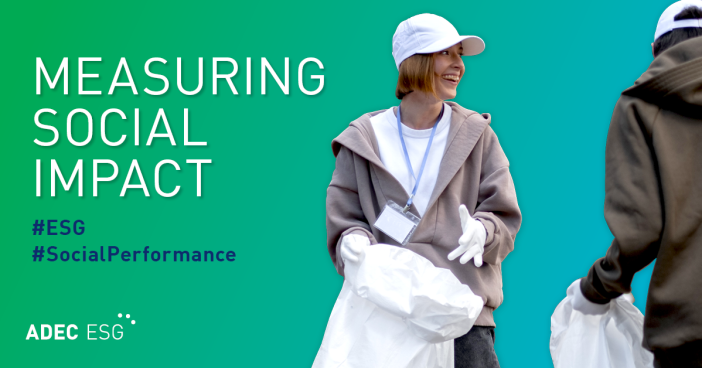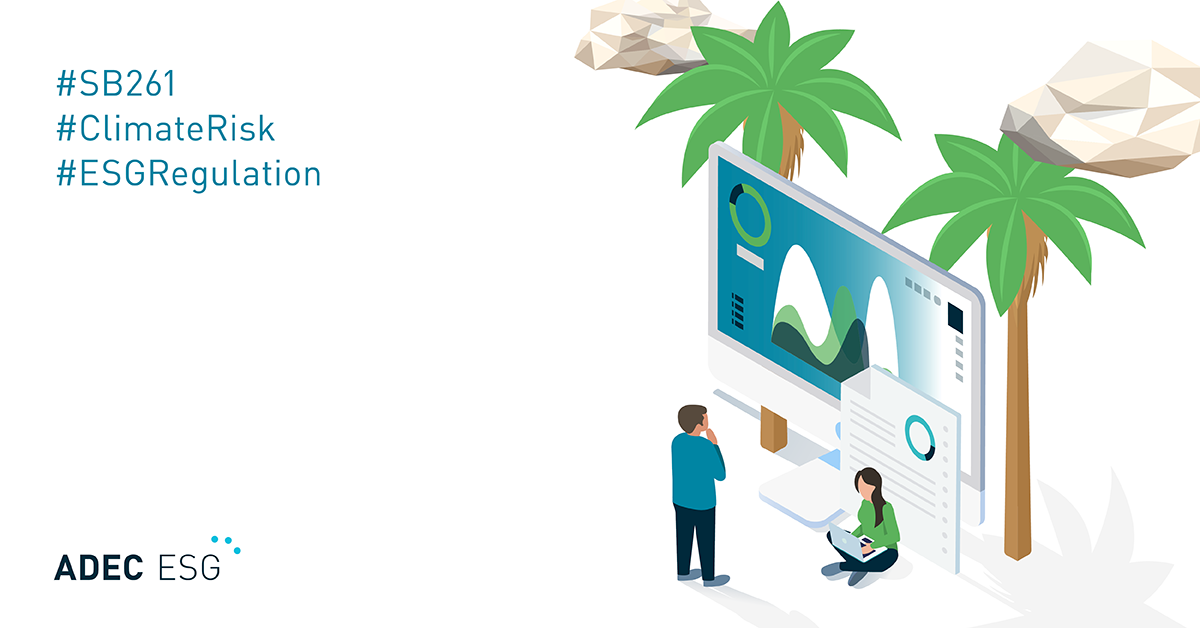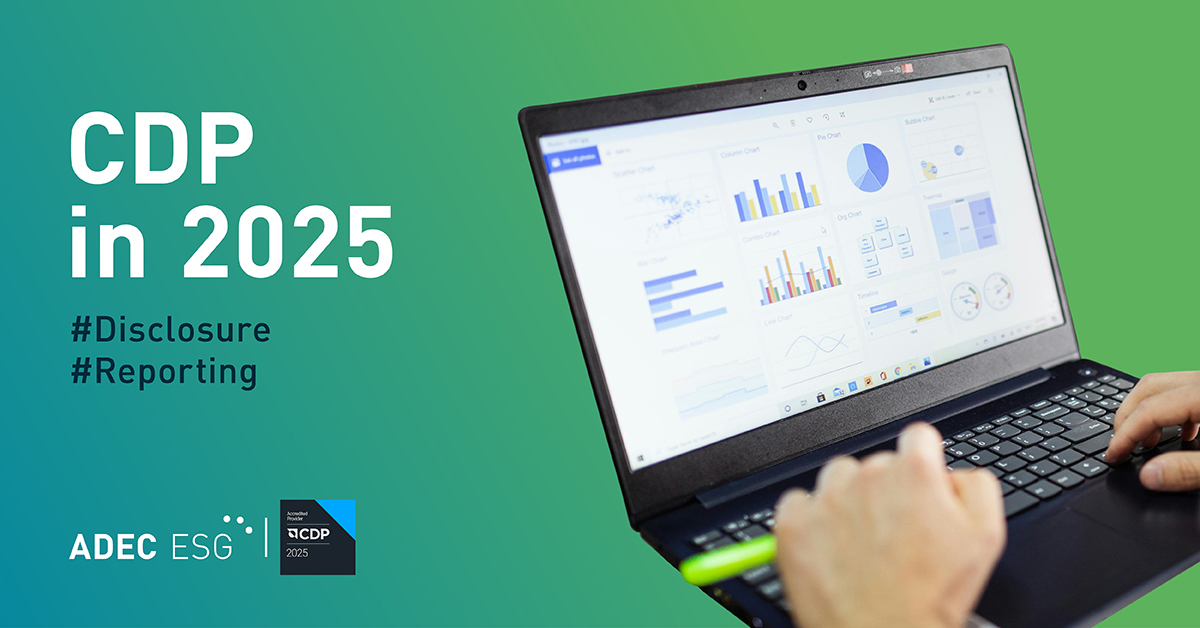Much of ESG data measurement today focuses on environmental metrics, such as water consumption, energy usage, and waste. When it comes to social and governance topics, programs and initiatives can be harder to quantify. Many organizations find it challenging to identify the most appropriate metrics or key performance indicators (KPIs) for their social and governance programs—but this is an essential step in assessing and improving overall performance and impact.
This article focuses on ways you can quantify and assess your company’s social performance, a process called social impact measurement. We’ll review known challenges and common mistakes, and present ways to overcome them.
Challenges in measuring social performance and impact
Unlike many environmental topics in ESG, for which we can turn to standards like the World Resource Institute’s Greenhouse Gas Protocol, there is currently no standardization for social metrics across organizations or industries. The lack of a widely acknowledged methodology or guidance means that it can be almost impossible to compare social programs and initiatives from company to company. It also presents challenges for organizations themselves. For companies with less mature ESG programs, there is no universal set of standards to guide their program development. For those with more mature programs, there is no reliable way for them to benchmark against past performance, let alone against the performance of their peers.
Quantifying, or assigning a monetary value to, many social issues can also prove difficult. While some initiatives lend themselves to quantification—such as auditing vendors and suppliers for fair pay—others do not. How can a company assign a monetary value to the benefits of providing mental health support to employees? How can it quantify fostering inclusive environments, or ensuring its modern slavery policy aligns with its mission and brand? Moreover, how can these measures and values be communicated effectively to stakeholders?
Solutions and best practices
Measuring social performance and impact has its challenges, but there are steps that companies can take to ensure they are getting the most accurate data possible.
1. Engage a variety of stakeholders
Effective ESG programs are designed and executed with targeted focus and precise goals—but should never be developed by a single individual or team operating in a silo. It’s critical to have conversations with all relevant stakeholders, and involve them in the design, management, and evaluation of a program.
For instance, when evaluating a philanthropic program, you should engage with internal and external stakeholders such as subject-matter experts, relevant nonprofits, and program beneficiaries to provide feedback on your company’s philanthropic efforts and ensure that your donations are achieving the desired effect. Like any ESG program or initiative, social programs should be a collaborative effort, incorporating input from knowledgeable experts and the individuals whom the program impacts.
2. Map impact pathways
To better understand the connections between your program’s inputs, activities, outputs, outcomes, and impacts, map out each of these factors using impact pathways. Mapping impact pathways will also allow you to determine if the metrics and KPIs you’ve identified and the data you’re collecting are actually the best forms of measurement for the type of impact you’re trying to create.
Below are questions you can ask yourself to evaluate each factor in an impact pathway:
- Inputs: What resources have been used?
- Activities: What actions have been taken?
- Outputs: What are the direct tangible results?
- Outcomes: What are the short-term observed effects?
- Impact: What are the long-term lasting changes?
For example, Company ABC has noticed underrepresentation of women at the management and executive levels of the organization. One of the strategies it employs (in addition to reviewing its hiring practices) is to invest in a leadership development program for women. Company ABC’s impact pathway may look like the following:

3. Prioritize good data practices
Efficient, reliable data is the cornerstone of good decision-making and a foundational part of any ESG program. To pave the way for growing programs and accurate data, invest in building robust data management capacities and feedback loops so that you can monitor, analyze, and improve your data quality over time.
Keep in mind that this may include data outside your organization. For example, consider collecting data along your entire supply chain to gain an understanding of the broader scope of your supplier diversity program—beyond your tier one suppliers, to tier two, tier three, and all the way to your raw materials.
4. Test causality
The best way to check if your social programs are actually working is to test for a causal relationship—that is, to determine if a particular cause (your inputs and activities) is responsible for a specific effect (your outputs, outcomes, and impact).
The gold standard of impact measurement is a randomized controlled trial, but an experiment of that magnitude and rigor may not always be practical or feasible for organizations. Instead, companies may look to quasi-experimental methods, which measure results without using random assignment.
For example, a company may conduct initial skills assessments across their entire workforce and repeat the assessments after a subset of employees have completed a pilot upskilling program. By evaluating the pre- and post-tests of program participants against a comparison group of non-participants, the company can determine whether their pilot was effective in upskilling their employees and should be scaled as part of their broader workforce development strategy.
5. Calculate value using a method that suits your goals
Understanding the value of a particular program can help organizations make informed decisions about projects and their trade-offs as well as track financial outcomes over time.
There are various measures that can be used, but one that businesses may be most familiar with is the return on investment (ROI). The basic formula to calculate return on investment is to divide the net return (or the total value of the return minus the total cost of the investment) by the cost of the investment itself.


To illustrate, if Company XYZ invests $12,000 in a new occupational health and safety system which generates $20,000 in additional revenue due to increased productivity and $40,000 in direct cost savings associated with fewer accidents, the return on investment for the system would be calculated as follows:


Company XYZ therefore has a 400% return on investment for its new occupational health and safety system.
While this example is overly simplistic and doesn’t take into account factors such as the time value of money or the non-financial impacts on stakeholders, it can be a useful tool for companies to begin assessing the relative returns of various social programs.
For best practice, more complex methods such as cost-benefit analysis (CBA) or social return on investment (SROI) should eventually be employed for companies seeking a more comprehensive understanding of the total value derived from direct, indirect, and intangible programmatic impacts.
Common missteps in assessing social impacts
A lack of standardization within the social impact measurement sphere means that many companies are starting from scratch when designing and tracking programs and initiatives. Below, we’ll review a handful of missteps we often see—and how you can avoid them.
Ignoring double materiality
When evaluating the materiality of certain social issues, many organizations take an inward approach, analyzing only how the issue may impact the organization and its internal stakeholders. Instead, organizations should borrow from the concept of double materiality, the idea that while there are external forces that impact an organization, the organization also has outward impacts on the world. Consider the effects that your activities have on the environment, communities, and economy in which you operate.
Not accounting for both positive and negative impacts
Impacts can be either positive, like improved reputation, or negative, like a human rights violation. Ideally, organizations should consider both. Engaging with cross-functional stakeholders, including strategy and risk departments, can help to ensure that all possible impacts have been considered.
Overstating impact or assuming causality
Be cautious about definitively claiming that any programs or initiatives have had an impact—positive or negative—without appropriate evidence. Ensure that your data supports your conclusions. While conducting experiments is ideal to test causality, if that is not an option, you can at least look for reputable sources like peer-reviewed studies that validate or challenge your assumptions.
While social impact measurement is necessary in order to track company progress over time and to benchmark within and across industries, current ESG standards and frameworks fall short of fully understanding the direct and indirect impacts of a program or initiative on a company’s stakeholders and the broader systems in which they exist. Companies should continue to adhere to ESG reporting requirements, but should also employ best practices, such as engaging diverse stakeholders, mapping impact pathways, improving data practices, exploring causality, and calculating value as they work towards increasing accountability and transparency throughout their programs.
ADEC ESG Solutions is a leader in sustainability solutions, supporting global organizations as they work to integrate environmental, social, and governance topics into successful and impactful corporate strategy. Talk to us today to learn more about how we can help you manage social data, engage stakeholders, and plan around your sustainability goals.




